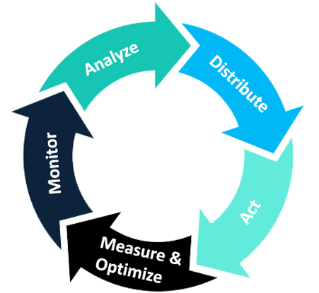While investment in customer experience (CX) technology continues to grow, many companies aren’t capitalizing on the extensive and often profound insights that are being generated.1 Regardless of an organization’s size or industry, Voice of Customer (VoC) programs that primarily focus on data and technology will prove unsuccessful. Instead, they need to take a holistic approach that draws insights from the data and embeds a customer-centric decision-making process across the organization.
“Organizations need a VoC program that goes beyond data and platforms and converts insights into customer-centric action.”
- Scott Lieberman, Principal, US Customer Advisory & Financial Services Lead
Without this holistic approach, there is typically a disconnect between the insights provided and business decisions being made. As a result, organizations end up with a lot of data with little effective action. Organizations need to design and operate a programmatic approach to VoC that goes beyond data and platforms and empowers organizations and employees to convert insights into action.





